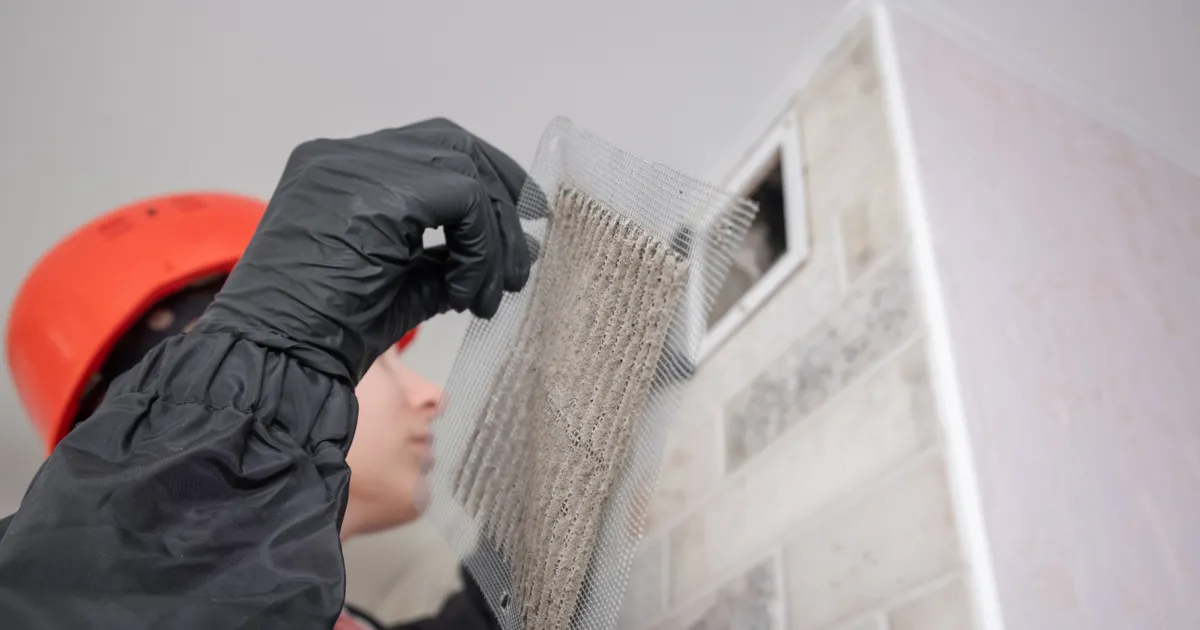A functioning ventilation system plays an important role in the safety and longevity of your home. Mechanical ventilation is the only way to maintain air quality and maximize the energy efficiency of a structure. Though there are a few ways to construct a whole-house ventilation system, they all work to achieve that same goal.1
They don’t require a lot of maintenance, but even still, a lot of homeowners neglect their ventilation systems. Today, we’re going to take a look at the benefits of keeping your vents clean, what happens when you don’t clean them, how much cleaning costs and a lot more!
 alexeisido/Shutterstock
alexeisido/ShutterstockBenefits of Vent Cleaning
There are a lot of reasons to take good care of your ventilation system. Some of the primary vent cleaning benefits include:
- Increase energy efficiency: Less obstacles and debris in your vents can lighten the load on your air conditioner and furnace.
- Extended HVAC life: A lighter workload means a longer lifecycle for your entire HVAC system.
- Cleaner air: The signature goal of ventilation is purifying the air that you breathe. By keeping it properly maintained, you reduce your need for additional air purification devices and improve overall air quality.
The benefits of proper vent cleaning extend far beyond the three mentioned above.2 That said, reduced energy costs, cleaner air, and less time spent replacing your furnace is more than enough incentive for most homeowners.
When To Clean Your Vents
The general rule of thumb is to invest in a proper vent cleaning every two to three years.3 That’s what the experts suggest, though reality is a bit more complicated. Every home is different, and those differences can dramatically change the need and frequency of vent cleaning.
The EPA suggests monitoring your vents for visible signs of mold or debris on a regular basis. Should you find either, it may be time to clean your ventilation system. Unexplained illness symptoms or allergies felt by household members could signify the need for vent cleaning too.
How To Clean Your Vents
Despite what most people might think, vent cleaning is actually really simple. All you need is a screwdriver, a broom, a cleaning brush, and a commercial grade vacuum cleaner. Cleaning out the dust and debris is as simple as turning off your furnace, unscrewing the duct covers, and vacuuming the ducts as thoroughly as possible.
But, just because the job is simple doesn’t necessarily mean that anyone with a strong enough vacuum can do the job properly. Vent cleaning done incorrectly can cause a number of problems. There’s always the risk of permanent damage to your HVAC system. Or, if the vacuum isn’t up to the task, you risk worsening indoor air problems.
All reasons most homeowners enlist the help of a professional ventilation cleaning contractor to handle the hard work for them.
Finding a Duct Cleaning Service Provider
Hiring the first company you come across online is never advisable. There are a lot of companies out there offering duct cleaning services, and not all of them are reputable.
To ensure you receive the best value and best service, be sure to follow the below guidelines:
- Check references and read reviews.
- Check with the Better Business Bureau, or a local consumer affairs office to see if any complaints have been filed.
- Ask them about any state-mandated licenses that they hold.
- Request a written timing and pricing estimate outlining the entire scope of the job before any work begins.
You’d do well to avoid dealing with any business that touts bold health claims or solicits business by cold calling or knocking on doors. To find local vent cleaners near you, search online for reputable trades sites or ask a friend for a referral.
Vent Cleaning Costs
There’s no one-size-fits-all price point for air vent cleaning. The cost of the service is relative to the size of your home, the complexity of the ventilation system, as well as any additional complications including the existence of rodents and mold.
All of that to say that the average cost of air vent cleaning could land anywhere between $450 and $1,000.4 Rodent control could cost as much as $500 more, with mold and mildew treatment costs adding as much as $6,000.
If you think that’s steep, consider the long term energy costs associated with an inefficient HVAC system. Not to mention the sticker shock associated with a furnace replacement. If your vents need to be cleaned, it would be wise to be proactive as a way to offset your risk of a future headache.
Breathe Easy
See? That wasn’t so hard! A quick brush-up on all things vents, and maintaining a proper cleaning schedule, is all you need to bring your home that much closer to peak efficiency. You don’t have to stop learning about proper vent care here either.
The United States Environmental Protection Agency is a great resource for additional information and aid. You can find a free list of consumer protection offices in your state, contact details for the Antimicrobial Information Hotline, and a handy consumer checklist by scrolling through their indoor air quality landing page.